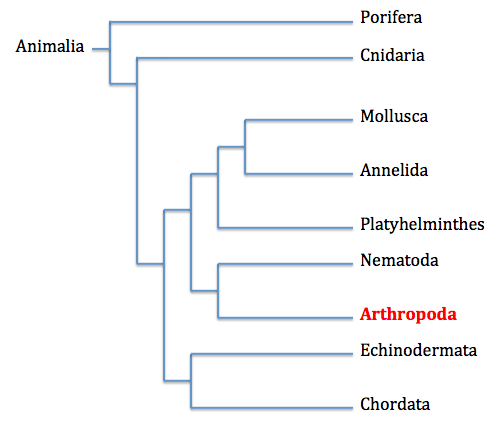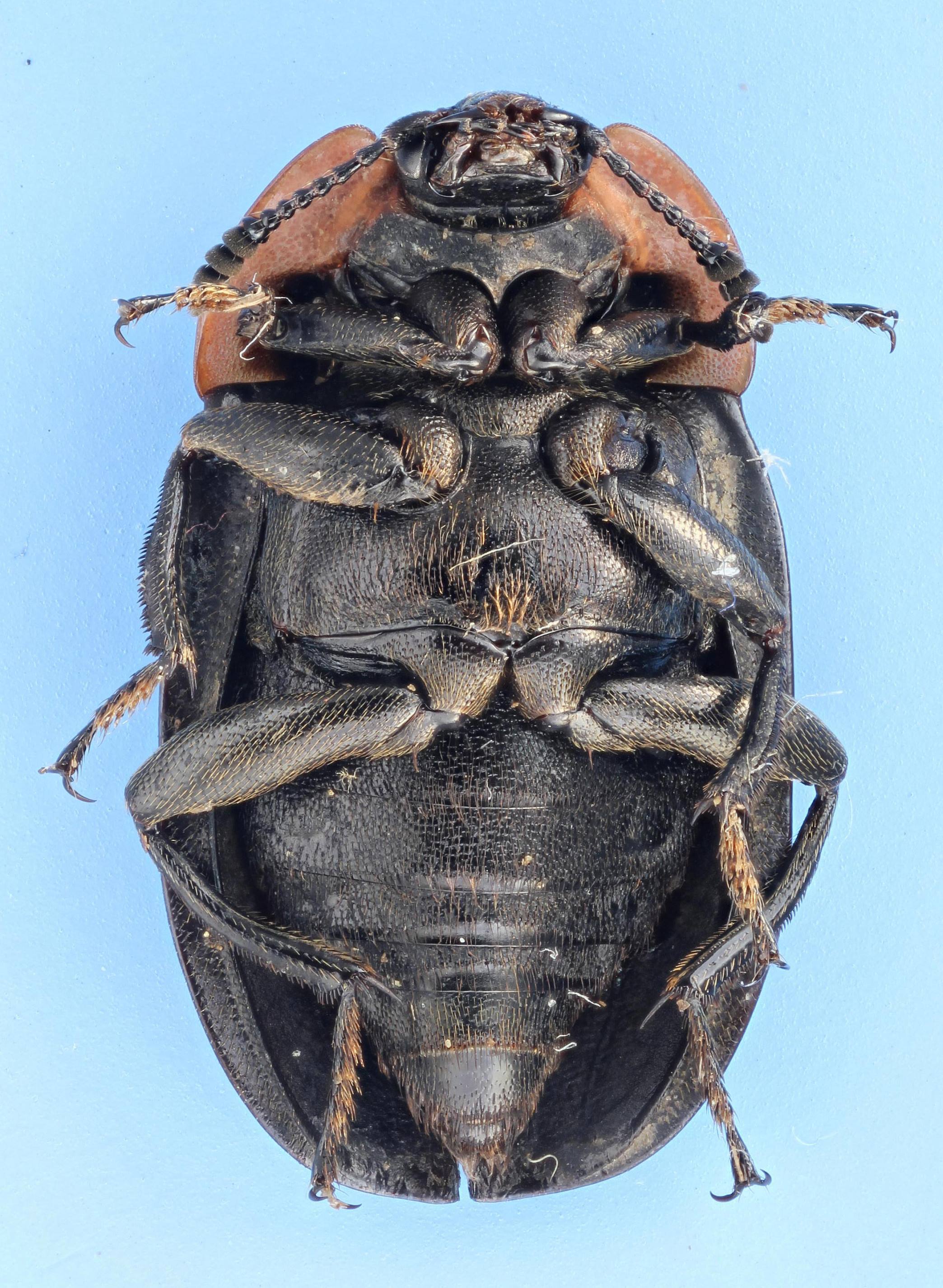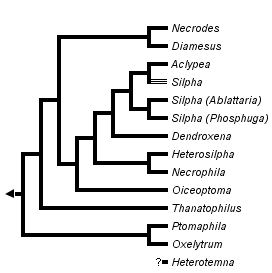Classification
Domain: Eukaryota
Kingdom: Animalia
Phylum: Arthropoda
Class: Insecta
Order: Coleoptera
Family: Silphidae
Genus: Oiceoptoma
Species: Oiceoptoma noveboracense
Domain: Eukaryota
O. noveboracense’s belongs to this domain because they have
membrane-bound nuclei and organelles. Eukaryota is a very
broad classification, for it includes organisms ranging from
cow patty mushrooms,
passionfruit, and
blue whales
(Campbell et. al. 2008).
Kingdom: Animalia
This organism is part of Animalia because it is multicellular,
motile, heterotrophic, and its cells lack cell walls (Campbell et.
al. 2008).
Phylum: Arthropoda

An organism in the phylum Arthropoda produces embryos that have
three tissue types: an endoderm, ectoderm, and mesoderm. They
are bilaterally symmetrical and have structures for feeding, sensing
their environment, and processing information. Arthropods are
protostomes, which means that their mouth develops before the anus.
And finally, they are ecdysozoans so their shells molt in order for
the organism to grow larger. O. noveboracense
fulfills all these requirements, placing it in this phylum (Campbell
et. al. 2008). The phylogeny to the right clearly shows where
arthropods can be found within the kingdom Animalia.
Class: Insecta
O. noveboracense has three pairs of legs and one pair of
antennae. They also have a segmented body with a head, thorax,
and abdomen. Those are all characteristic of an organism in
this class (Encylopedia of Life 2012).
 Order: Coleoptera
Order: Coleoptera
An insect in the order Coleoptera hardens their forewings into
elytra. The name “Coleoptera” literally means “sheathed wings”
(koleos= sheath, pteron=wings). These elytra serve to protect hind
wings as well as the dorsal surface of the abdomen. O.
noveboracense also does this which is why they belong to this
order (Encyclopedia of Life 2012). A few other beetles that
landed a spot in this order include the
rove beetle,
rainbow scarab beetle and
dung beetles (Bug Guide 2012).
Family: Silphidae
This organism breeds at large carcasses and shows little to no
parental care. Their larvae also bear a cluster of six
stemmata on each side of the head. For those reasons, O.
noveboracense is placed into the family Silphidae (Encyclopedia
of Life 2012).
Genus: Oiceoptoma
The
phylogenetic tree directly to the left indicates where Oiceoptoma is
placed with relation to other genuses within the family Silphidae.
The larvae of this species range from being a light brown to a dark
reddish color. They are generally flat and are capable of
moving during development (Oiceoptoma noveboracense, a member of
Carrion Beetles 2013). When the organism becomes an adult, they are
either dark-brown or black in color. The outer margins of the
pronotum are outlined in a bright orange-red color which make them
easy to distinguish (Oiceoptoma noveboracense, a member of Carrion
Beetles 2013). They grow to be between ten to fourteen
millimeters in length (Bug Guide 2012). The elytra apex on the
female adult are tapered and on the male adult they are more rounded
(Oiceoptoma noveboracense, a member of Carrion Beetles 2013).
Click here to continue to the Habitat page
